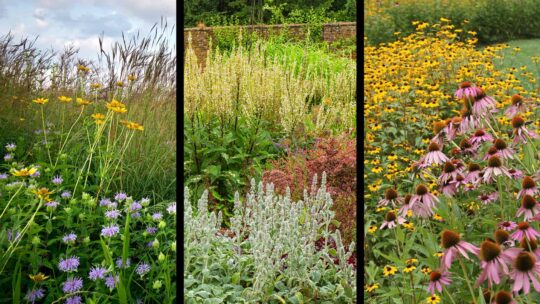Mowing is a productive management strategy for weed control that can reduce reliance on herbicides. And, it helps to keep your pastures productive and healthy for your animals—alongside reducing costs and maintenance needs. So, follow along as ambassador Grae Buck helps you keep your pastures healthy and weed-free with his weed control pointers.
The Impact of Improper Weed Management
Weeds can include both native and non-native plants; however, they are often undesirable in pastures intended for grazing purposes. They can also pose a health threat, as some weeds are toxic to horses and other livestock. When not managed properly, weeds tend to take over and even outcompete native grass species. They’re also detrimental in fields cut for hay, as they can degrade the overall quality of the hay itself. Likewise, some weeds aren’t palatable, as they may be too thorny or tough to chew and contain lower nutritional value.
Weed Control With Mowing
Routine mowing is incredibly beneficial for both pastures and livestock alike. Young grass plants are high in nutrient values (such as protein and energy), while mature grasses are more fibrous with less nutrient value. Regular mowing also works to keep plants in a vegetative phase, replacing leaves instead of producing new seeds. It also works to damage the weed plants, helping to eradicate them, while supporting healthy grasses instead.
Understanding Weed Life Cycles
It’s important to understand the life cycles of the weeds you’re dealing with, in order to properly manage them through mowing. Plants have a vegetative stage when they grow, and a reproductive stage where they produce seeds. This makes mowing an even more important management strategy to combat weeds before their reproductive phase.
Understanding Weed Types and Reproduction
Furthermore, it’s important to understand the type of weed you’re dealing with. Generally, weeds are broken down into three types: annuals, biennials, and perennials. Annuals complete their life cycle in one year. They grow, produce a seed, and die at the end of the season. If not mowed or treated prior to seeding, each plant can produce hundreds of new seeds. Biennials take two years to complete their life cycle. They grow, produce a seed, and die the second year. Perennials live for multiple years, reproducing each year.
Weeds can also reproduce in ways other than seeds. Some plants produce bulbs or rhizomes, which are underground roots. Mowing trims the stems to keep the plants in the vegetative stage, preventing it from producing seeds and reproducing. It often takes several years of routine and properly timed mowing to completely control weeds.
Mowing Height for Weed Control
The proper mowing height depends on the grass type and species: warm season and cool season. As a rule of thumb, never mow shorter than three inches in height. Grazing or mowing too low will overly stress the plants, reducing their ability to photosynthesize. This also increases the potential for weeds to take over. For the best management, allow grass to grow to approximately eight to ten inches, then graze down to about four to five inches.
Rotational Grazing
Rotational Grazing is an important component of grazing management. Rotate the animals on pastures to maintain forage height, and routinely mow as necessary, to keep the height in a vegetative state. Following grazing or mowing, rotating animals between pastures allows the grass to rest and regrow. The vegetative growth of cool-season grasses (like Kentucky Bluegrass, Orchardgrass, Fescues, etc.) slows significantly during hot summer months. When the growth slows, these grasses require less grazing pressure or mowing.
Warm-season grasses (such as Bermudagrass, Switchgrass, and Indiangrass) thrive in hotter, dry conditions. So, mowing and grazing management will differ from cool-season grass pastures. Ensure that pastures are a sufficient height heading into winter. This helps to provide proper soil cover and healthy vegetation into the following growing season.
Additional Weed Control Considerations
In addition to mowing, other important control factors include soil testing for nutrients and fertility, and rotation to limit the stocking rates of pastures, to ensure manageable grazing pressure. Overseeding of bare or thin areas will also help to ensure the pastures stay lush and grazeable for livestock.
Ensure animals are kept off newly seeded pastures for at least one full growing season. This helps new plants establish sufficient root systems. Early spring or fall are the best times for overseeding, avoiding the dry, hot summer when new grass is establishing. In turn, these management strategies will yield healthier pastures for your animals and the environment, and reduced maintenance requirements for years to come.



